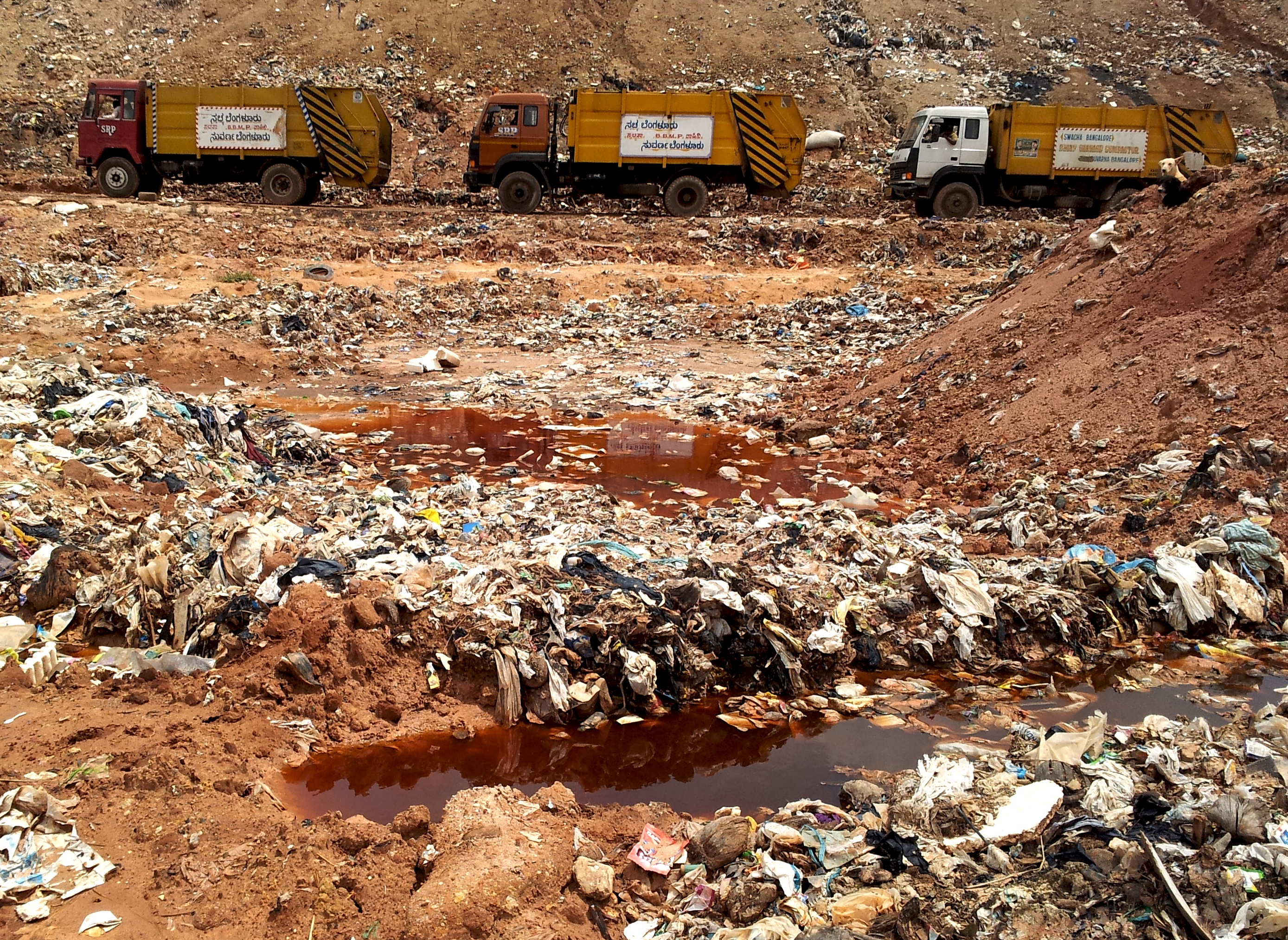
Image source: https://www.aplustopper.com/wp-content/uploads/2016/09/causes-effects-soil-pollution.jpg
Soil contamination is the diffusion of hazardous material throughout soil. The material can be either solid or liquid and usually bonds with the soil in which it is mixed. Contaminants do not have to be directly deposited in the soil to negatively affect it; for example, many airborne toxic molecules can settle in soil.
Soil contamination may also occur as a peripheral effect of ground water contamination, aggravated by flooding or improper waste water disposal. Plants, animals, and humans can absorb the adverse compounds upon contact.
Soil can be polluted with either heavy metals or various other chemicals. Again, the types of exposure are dermal contact (e.g. gardening), inhalation (breathing dust particles), or ingestion (eating items grown in impure soil).
The sources of water and soil contamination are innumerable; however, the following have a high probability of potentially contaminating local environs:
. Machine shops.
. Railroad yards and other railroad-related work sites.
. Chemical manufacturing plants.
. Incinerators.
. Dry cleaning stores.
. Chemical or medical waste storage facilities.
. Nuclear power plants or testing facilities.
. Any manufacturing plant that uses any type of cleaning solvents or gasoline based products.
. Oil refineries.
. Landfills.
. Gas stations.
Accidental or intentional leaks and spills from any of the above organizations may allow toxic chemicals to seep into the soil or into ground aquifers or water tables. Once the chemicals have contaminated the soil or water, it is incredibly difficult to remove them. Soil may have to be removed from the site and treated, or neutralizing chemicals introduced into the polluted material.
In the worst case scenarios, water or soil must be sequestered such that it does no more damage as it cannot be treated. If water or soil contamination goes unnoticed and unsolved people with high exposures to the contaminants may develop chronic or terminal illnesses.
Chronic exposure may cause some of the following symptoms as well as others not listed here:
. Various forms of cancer (lung, bladder, brain, kidney, leukemia, lymphoma, skin cancer).
. Various forms of learning disability (ADD, ADHD, LD).
. Teratogenic effects (fetal health risks, miscarriages and birth defects).
. Reproductive effects or genetic damage from radiation.
. Respiratory effects (breathing difficulties, allergies and other similar conditions).
. Gastrointestinal effects (digestive conditions).
. Cardiovascular effects.
. Immune system deficiencies.
. Hepatic effects (various liver conditions).
. Renal effects (various kidney effects including blood in the urine).
. Neurological effects (various nervous system disorders, including reflex malfunction and headaches). If an individual has reason for concern or the physical manifestations of symptoms they should contact a physician and/or the local authorities. There is no reason that anyone should have to consume unsafe water or live on dangerous land. Toxic tort law exists to protect people's rights and make sure they receive just compensation for others' negligent behavior.
Experiened Legal Counsel for Soil and Water Contamination
Are you or a loved one in need of legal assistance in your area regarding Soil and Water Contamination? It is important for you or someone you know who are in need of experienced legal advice regarding Soil and Water Contamination or a Soil and Water Contamination Lawsuit, to contact legal counsel and likely receive free Soil and Water Contamination legal advice.